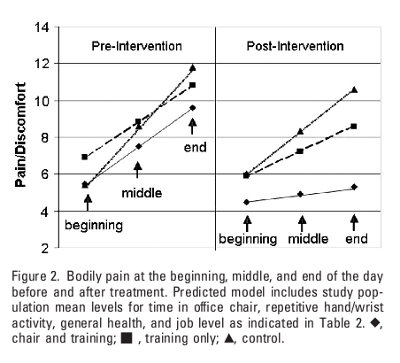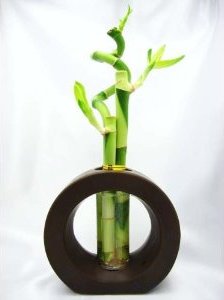Scientifically Proven Tips For a More Productive Office
Research shows that reordering your office can significantly boost productivity. Here are four simple tweaks, all backed by scientific research, that you can make to your work environment today to increase your productivity.
Bring Nature into the Office
Studies have shown that certain types of environments are restorative: they reduce mental fatigue, increase the ability to concentrate, and improve health, leading to an increase in productivity. One of the most effective restorative environments is nature. An office with a window that has a natural view is enough to trigger the benefits.
Those with a view of nature felt less frustrated and more patient, found their job more challenging, expressed greater enthusiasm for it, and reported higher life satisfaction as well as overall health.1
Colorful, diverse landscapes with natural composition are preferred, and views of trees, water, and sky can increase the restorative effect.
Take action to increase productivity
Take micro-breaks throughout the day to gaze at the natural elements around you. If you aren’t lucky enough to have an office with a window, or if your view is a cityscape instead of a landscape, you can still bring touches of nature to your office. Live plants, tabletop fountains, or posters of nature scenes will do the job as well.
Use High Color Temperature Light Sources
Research has shown that working under light with a high color temperature has a number of benefits such increased mental acuity, vitality, and alertness, increased work performance, reduced fatigue, reduced daytime sleepiness, and improved mental health.
“Color temperature” refers to the color of the light produced; it is independent of the brightness of the bulb. Bluer lights increase productivity and alertness, while yellower lights promote relaxation. Most compact fluorescent bulbs have a color temperature of 2700K or 2850K, and the highest color temperature that is readily available commercially is 6500K.
Studies have shown that the 7500K light sources are correlated with higher mental acuity compared to 3000K light sources.2 5000K sources are correlated with reduced drowsiness compared to 3000K.3 17,000K sources are correlated with improved concentration and thought clarity compared to 4000K.4
Take action to increase productivity
Choose light bulbs that have a high color temperature and a comfortable brightness. Try these 23 watt bulbs, or these 26 watt (equivalent to 100w incandecents) bulbs.
Use a Highly Adjustable Chair

A highly adjustable chair combined with ergonomics training has been shown to improve health by reducing the incidence of musculoskeletal pain an injury. A reduction in bodily pain was observed throughout the day, and the study found a significant economic benefit in investing in an ergonomic chair.
[…] the chair-with-training intervention is associated with productivity improvements of $354 per worker per day and has a benefit-to-cost ratio of 22:15
An ergonomic char is one of the more expensive workspace changes to implement, but the benefit-to-cost ratio clearly shows that it is worth it.
Take action to increase productivity
Invest in a highly adjustable chair and learn how to use it properly. Have a look at highly adjustable Aeron chairs. Use a chair with adjustable armrests in height, width, and pivot, adjustable chair height, a flexible back support, adjustable firmness support in the lower back, adjustable seat depth, and a gliding mechanism that allows the seat to glide forward as you recline.
Keep the Ambient Temperature Comfortable
There has been quite a bit of research on the effect temperature has on productivity. The graph below is taken from a meta-study which summarizes the findings of a number of studies on the relationship between temperature and performance.

There is a lot of variation in the optimal temperature in terms of productivity. This may be caused by personal variations in comfort zone temperature, seasonal variations, or climate differences between the locales where the studies were conducted.
Further muddying the issue is that some studies provide evidence that for optimal work performance the temperature should be in the comfort zone, but other studies show that temperatures outside of the comfort zone cause arousal effects that increase performance.
Based on our review, available data do not provide compelling or consistent evidence that temperature variations within the comfort zone significantly affect worker performance. However, performance decrements are more clearly established for temperatures outside of the comfort zone. Decrements are most clearly documented for high temperatures.6
Take action to increase productivity
Maintain an ambient temperature that is comfortable or slightly cooler than your comfort zone. Avoid working in high temperatures.
-
Rachel Kaplan, The role of nature in the context of the workplace, Landscape and Urban Planning, Volume 26, Issues 1-4, Special Issue Urban Design Research, October 1993, Pages 193-201, ISSN 0169-2046, DOI: 10.1016/0169-2046(93)90016-7. ↩
-
Deguchi T, Sato M: The effect of color temperature of lighting sources on mental activity level. Ann Physiol Anthropol 1992, 11:37-43. ↩
-
Noguchi H, Sakaguchi T: Effect of illuminance and color temperature on lowering of physiological activity. Appl Human Sci 1999, 18:117-123. ↩
-
Peter R Mills, Susannah C Tomkins, and Luc JM Schlangen, The effect of high correlated colour temperature office lighting on employee wellbeing and work performance, Journal of Circadian Rhythms 2007, 5:2 DOI:10.1186/1740-3391-5-2 ↩
-
Amick, Benjamin C. III, PhD; Robertson, Michelle M. PhD; DeRango, Kelly PhD; Bazzani, Lianna MPH; Moore, Anne PhD; Rooney, Ted MPH; Harrist, Ron PhD, Effect of Office Ergonomics Intervention on Reducing Musculoskeletal Symptoms, Spine, Volume 28, Issue 24, 15 December 2003, Pages 2706-2711 ↩
-
Seppanen, Olli, Fisk, William J., & Faulkner, David. (2003). Cost benefit analysis of the night-time ventilative cooling in office building. Lawrence Berkeley National Laboratory: Lawrence Berkeley National Laboratory. LBNL Paper LBNL-53191. ↩




Discussion on
Scientifically Proven Tips For a More Productive Office
by Jess Johnson in Career
12 Comments
6:29 pm UTC, 2011-03-24
8:48 pm UTC, 2011-03-24
4:02 pm UTC, 2011-03-25
4:23 pm UTC, 2011-03-25
6:24 pm UTC, 2011-03-25
9:25 pm UTC, 2011-03-26
1:25 am UTC, 2011-03-27
3:50 pm UTC, 2011-03-28
3:52 pm UTC, 2011-03-28
7:58 pm UTC, 2011-03-29
9:58 pm UTC, 2012-07-30
10:39 pm UTC, 2012-07-30Leave a reply